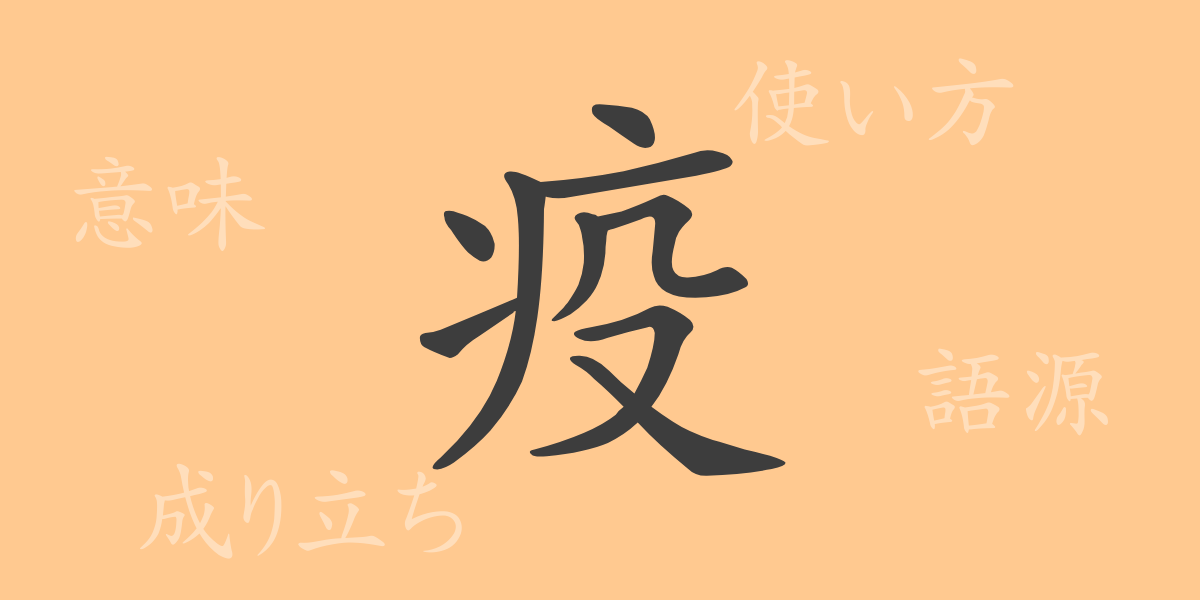“
The common Japanese kanji “”疫”” (Eki) is not often seen in daily life, but when a global health issue arises, this character becomes frequently used in media and news reports. In this article, we will delve into the origin, meaning, usage, and compound words and idioms containing “”疫””. By understanding the history and culture behind the words, we can experience a richer world of language.
The Origin of 疫 (Eki)
The kanji “”疫”” was created in ancient China to represent the spread of disease. This character is composed of the radical “”疒”” (Nezumi ga mae), which carries the meaning of illness, and the character “”殳”” (Hokozukuri), which signifies weapons or attacks. From this combination, “”疫”” is thought to symbolize the way diseases spread as if attacking.
The Meaning and Usage of 疫 (Eki)
The kanji “”疫”” means the rapid spread of a disease over a wide area, affecting many people, i.e., an “”epidemic””. It often refers to the large-scale spread of infectious diseases. It can also be used metaphorically to describe the rapid spread of something.
Reading, Stroke Count, and Radical of 疫 (Eki)
The reading and basic information of the kanji “”疫”” are as follows:
- Reading: The on’yomi reading is “”えき”” (Eki), and there is no specific kun’yomi reading.
- Stroke Count: It consists of 10 strokes in total.
- Radical: The radical is “”疒”” (Yamaidare).
Compound Words, Idioms, and Proverbs Using 疫 (Eki) and Their Meanings
Some compound words and idioms containing “”疫”” include:
- 疫病 (Ekibyou): An epidemic disease, particularly an infectious disease.
- 疫学 (Ekigaku): The academic field that studies the laws of disease occurrence and spread.
- 疫病退散 (Ekibyou taisan): A phrase expressing the wish for an epidemic to go away and health to return.
These words are often used in the fields of medicine and public health.
Conclusion on 疫 (Eki)
The kanji “”疫”” represents the important concept of disease spread, from its formation to its meaning and the compound words in which it is used. Throughout history, epidemics have been a significant challenge for humanity, and this kanji expresses their impact through language. In modern society, the use of this kanji contributes to the dissemination of knowledge related to health and medicine, playing an important role in deepening our understanding and countermeasures to build a better future.
“

























